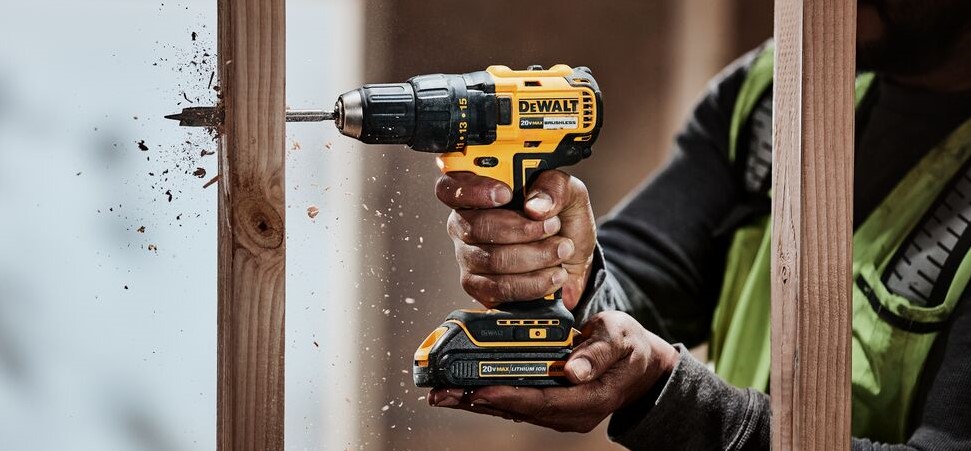When you’re tackling a DIY project or professional job, choosing the right drill bit can make all the difference. You might find yourself wondering if a 1/4 inch drill bit is equivalent to 6mm. With various measurements and standards in the world of tools, it’s easy to get confused. Understanding these conversions is crucial for achieving precise results.
In this article, we’ll clarify the relationship between a 1/4 inch drill bit and its metric counterpart, 6mm. Whether you’re drilling into wood, metal, or plastic, knowing the correct size ensures that your work is efficient and effective. Let’s dive into the details and clear up any confusion you might have about drill bit sizes.
Overview of Drill Bit Sizes
Drill bit sizes reflect the diameter of the bit, which dictates the hole’s size. U.S. measurements often use inches, while metric measurements rely on millimeters. Understanding these measurements ensures accurate drilling, especially in projects requiring specific dimensions.
Common Drill Bit Sizes
- 1/4 inch: Equals approximately 6.35 mm. Ideal for medium-sized holes.
- 6 mm: Equals approximately 0.236 inch. Suitable for standard and light-duty tasks.
- 1/8 inch: Equals approximately 3.18 mm. Common in precision work.
- 3/16 inch: Equals approximately 4.76 mm. Useful for thicker materials.
Conversion Considerations
When converting between inches and millimeters, accuracy matters. Remember that 1 inch equals 25.4 mm. To convert a drill bit size from inches to millimeters, multiply by 25.4. For example, a 1/4 inch drill bit converts to:
[
1/4 , \text{inch} \times 25.4 = 6.35 , \text{mm}
]
Choosing the Right Size
Selecting the right drill bit size depends on the material and the project requirements. Always consider the intended use before making a choice. By using the proper size, you can ensure efficient drilling and minimize the risk of damaging the material.
Understanding Measurements
Understanding measurements is essential for effective drilling. When working with drill bits, knowing how inches and millimeters relate aids in making informed choices.
Inches vs. Millimeters
Inches and millimeters serve as primary measurement systems. U.S. projects typically use inches, while many other regions favor millimeters. Recognizing how these systems differ is crucial for selecting the correct drill bit. Here’s a comparison of common sizes:
| Drill Bit Size (Inches) | Equivalent Size (Millimeters) |
|---|---|
| 1/8 | 3.18 |
| 3/16 | 4.76 |
| 1/4 | 6.35 |
| 1/2 | 12.7 |
Understanding these conversions can prevent miscommunication on project specifications and ensure accuracy.
Converting 1/4 Inch to Millimeters
To convert 1/4 inch to millimeters, use the conversion factor where 1 inch equals 25.4 mm. Multiply the inch measurement by 25.4:
- Calculation:
- 1/4 inch × 25.4 mm/inch = 6.35 mm
In practical terms, a 1/4 inch drill bit measures approximately 6.35 mm. Although it’s close, 1/4 inch is not exactly equal to 6 mm. For projects that require 6 mm, opt for a specific 6 mm drill bit to achieve the needed hole size and fit.
Is 1/4 Drill Bit 6mm?
A 1/4 inch drill bit is not precisely equal to 6mm. The actual measurement of a 1/4 inch bit is approximately 6.35mm, resulting in a slight difference that can impact your projects.
Comparative Analysis
Understanding the differences in sizes is essential for effective drilling. A summary of key comparisons includes:
| Drill Bit Size | Diameter in Inches | Diameter in Millimeters |
|---|---|---|
| 1/4 inch | 0.250 | 6.35 |
| 6 mm | 0.236 | 6.00 |
| 1/8 inch | 0.125 | 3.18 |
| 3/16 inch | 0.188 | 4.76 |
While 1/4 inch closely approximates 6 mm, the difference is enough to warrant caution in applications requiring precise measurements. This comparative analysis helps clarify which bit to use based on specific project needs.
Practical Applications
Selecting the right drill bit size influences the outcome of your projects. Here’s how each size fits into practical applications:
- 1/4 inch drill bits excel in larger pilot holes for lag bolts or when working with sturdy materials.
- 6 mm drill bits suit specific hardware components and are often preferred in metric systems for woodworking and metalworking tasks.
Using the correct size minimizes the risk of misalignment or damage, ensuring that your work remains both efficient and reliable.
Conclusion
Understanding the difference between a 1/4 inch drill bit and a 6 mm drill bit is crucial for any DIY enthusiast or professional. While they may seem similar at first glance, their slight size difference can significantly impact your project. Using the right drill bit ensures precision and efficiency, preventing potential damage to your materials.
Always consider the specific requirements of your task before choosing a drill bit size. Whether you’re working with wood, metal, or other materials, knowing when to use a 1/4 inch or a 6 mm bit can make all the difference in achieving the best results. Stay informed and make confident choices for your drilling needs.

Hi, I’m Md Rofiqul, a gardening enthusiast who loves spending time in the garden and backyard. I enjoy caring for plants, growing flowers and vegetables, and creating a green space that feels peaceful and refreshing. Gardening is more than just a hobby, it’s a passion that connects me to nature and brings joy to my daily life. Living with plants inspires me to embrace simplicity, patience, and sustainability while making every day more colorful and rewarding.
